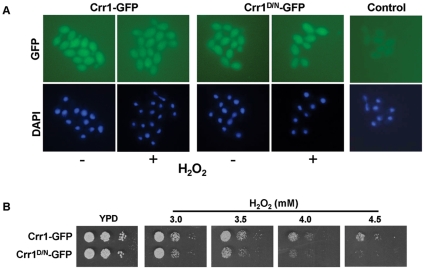Figure 4. Mutation of the putative phospho-aspartate of Crr1 impairs hydrogen peroxide resistance, but does not affect the cellular localisation of the protein.
(A) The localisation of GFP-tagged wild-type Crr1 (Crr1-GFP) and mutant Crr1, in which the putative phospho-aspatate residue in the receiver domain was mutated to asparagine (Crr1D/N-GFP), were determined by fluorescence microscopy of JC924 (Crr1-GFP) and JC926 (Crr1D/N-GFP) cells before (−) and after (+) treatment with 5 mM hydrogen peroxide (GFP) for 10 min. Nuclei were visualised by DAPI staining (DAPI). The control panel illustrates the level of background fluorescence observed in wild-type cells (JC806) expressing untagged Crr1. (B) 103 cells, and 10-fold dilutions thereof, of exponentially-growing crr1Δ cells expressing either CRR1-GFP (JC924) or CRR1D/N-GFP (JC926) were spotted onto YPD plates containing the indicated concentrations of hydrogen peroxide and incubated at 30°C for 24 h.

